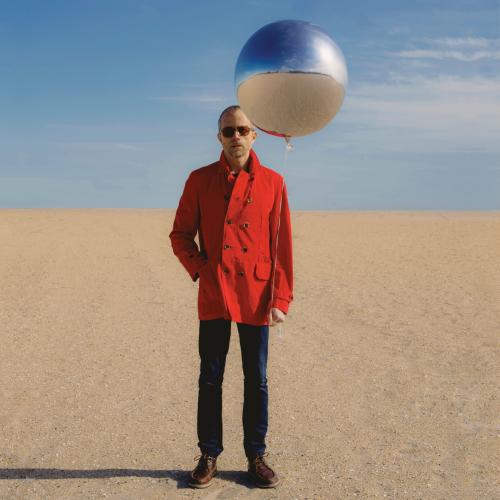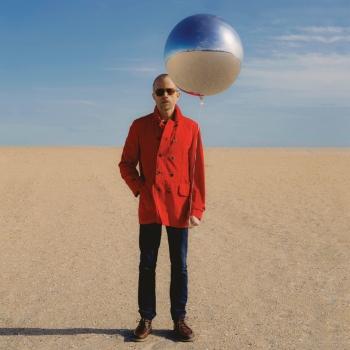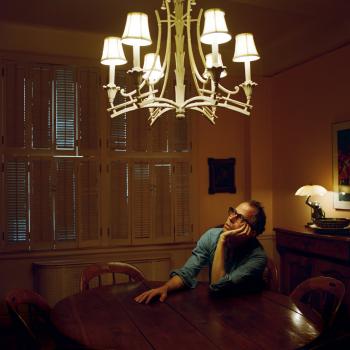
Silver Balloon Jesse Harris
Album Info
Album Veröffentlichung:
2022
HRA-Veröffentlichung:
21.10.2022
Das Album enthält Albumcover
- 1 The Hanged Man 03:43
- 2 Yankee 02:53
- 3 Out In The Storm 03:24
- 4 One In A Million 02:13
- 5 Hummingbird 04:04
- 6 On This Lonely Night 03:46
- 7 New Year's Day 03:13
- 8 Silver Balloon 02:37
- 9 The Good Morning Song 02:23
- 10 Shadow 03:59
Info zu Silver Balloon
When songwriter and producer Jesse Harris set about writing and recording ‘Silver Balloon,’ he was enamored with the esteemed science fiction author Philip K. Dick. “I love how he bends reality, and I wanted to do the same in the music,” Harris says. “The world feels so chaotic these days, and it was as though we – Kenny Wollesen and I – needed to express it, even embrace it.” And while chaos preoccupies the lyrical content of Silver Balloon — a collection of 10 exquisite songs assembled like miniature Goldbergian contraptions whose machinations, while beautiful, confound expectations — it also embodies the spirit of its recording.
“Almost all of my other recordings were made live with a band, aspiring towards hi-fi recording, but on this one we played to drum pre-sets of old keyboards, processed sounds through vintage harmonizers, and layered the songs as we went along,” Harris recalls of the process, listing just some of the tools he used to dismantle any notion of staid tastefulness. “At first Michael Blake hated what we did to his saxophone on ‘Hummingbird.’”
Harris recorded Silver Balloon over eight days in his home studio with percussionist Kenny Wollesen, a collaborator of 30 years. They would start casually at around 1pm and by 7pm, having recorded a complete song, go out to dinner at Frenchette down the block, come back and work some more. On two mornings Harris recorded a solo acoustic song (“One In A Million” and “The Good Morning Song”) in addition to the song of the day, over which Wollesen would add overdubs — and of course run them through the H3000 Harmonizer, a piece of outboard gear first designed in the 70s and used frequently by artists such as Laurie Anderson, and later by guitar gods like Steve Vai. “People have asked me and Kenny what we did to the guitar on ‘The Hanged Man’ and the honest answer is we don’t know. Often the H3000 would seem to make decisions on its own, and we began to see it as a kind of medium.”
When the two first met in 1993, Harris was 23 and Wollesen was 27. “Kenny played on my first album. Since then we’ve worked together in a lot of groups and shared a lot of stories.” For instance, Harris tells of a show of Kenny’s at the University of North Texas in Denton (Harris was driving through en route to California) when a cool 19-year-old student in a blue 1971 Cadillac picked up the band from the hotel. Later that night, she jammed with them and turned out to be a brilliant singer: Norah Jones. Harris went on to play guitar on and write five songs for her debut album, including the GRAMMY-winning modern standard “Don’t Know Why,” while Wollesen contributed drums. Over time, Wollesen has appeared on many of Harris’s projects, including the soundtrack for Ethan Hawke’s The Hottest State, a collection made up of Harris’s songs covered by artists like Cat Power, Willie Nelson, Bright Eyes, Feist, and The Black Keys, among others.
“When I met Kenny he had just played on Tom Waits’s Black Rider and was in the scene with Marc Ribot and John Zorn. Unlike most of the jazz musicians I knew at the time, he was obsessed with blues and Dylan. When we hung out, we’d listen to Muddy Waters and Lightnin’ Hopkins.”
In 2019, Harris built a mobile home studio and started recording artists, most of whom he has released on his label, Secret Sun Recordings. He produced Maya Hawke’s debut album, Blush, and her singles “To Love a Boy” and “Stay Open;” part of Toth’s second album; Cosmo (Harris’s instrumental band); and John Zorn’s Songs For Petra, among many others. Then the pandemic hit. “Without live shows, all musicians could do was record. Since I couldn’t bring in engineers, I had no choice but to learn to record artists myself.” When he started producing singer Mads Jensen, who sings harmonies throughout Silver Balloon, he had to do it in a new way. “We didn’t start with completed songs. Kenny was around and free – which never happens – so we began experimenting – just the three of us. She’d come in with a fragment or a concept and we’d build the music from a drum machine part or loop, add the bass, and Mads would sing to the structure we’d created.”
“I decided that eventually I would try recording some songs with Kenny using the same process. And when we started, I never planned to mix it myself, but we grew so attached to the sound and were afraid someone would make everything too correct and get rid of the chaos.” Harris started with a handful of songs already written but was so inspired by what he and Wollesen were doing that he wrote four more songs during the time of the sessions, even recording one the same day he wrote it. “I woke up at 6am, grabbed my guitar, wrote ‘Out In The Storm’ in bed and recorded it with Kenny that day.”
They ran Harris’s vocals through the H3000, an eccentric vocal production tool that lands somewhere between Nuggets-era garage psych and modern autotune. “Kenny would play the drum machine live, so most of the drums are performances rather than loops. He’d trigger fills using the buttons. Then he’d play live drums over that. We’d turn on effects to random settings and embrace whatever occurred. If either Kenny or I loved something, we’d keep it — in fact, if either of us loved something, the other would acquiesce. There was no disagreement.”
This process is perhaps most clear on album opener “The Hanged Man.” Harris sings softly and sweetly but with an added sci-fi element. The bass holds down the chords but the rest of the space is filled with unidentifiable instruments swirling through unfamiliar effects. The guitars sound like they’re being played backwards, but the listener can’t be sure. It sounds wild but improvised, like an electronic Astral Weeks.
On “Out In The Storm” the percussion simulates the chaos of weather. We can follow the guitars and keyboards, but the percussion is mixed loud, feels industrial, like the breathing of a factory. At points, the song’s percussion storm has the violence of Nine Inch Nails. And, through the effects, Harris’s voice can feel like David Lynch’s singing on his own similarly bizarre dreamscape recordings. When he sings, “No place to escape the rain, you dash out on the street again,” we gather that this storm isn’t just weather.
Though the recording style is new, Harris’s refined songwriting style is still everpresent. On “Hummingbird,” the most beautiful melody on the album, Harris writes what initially feels like a classic jazz standard in 32 bar form, accompanying himself with a simple yet elegant guitar part. But Wollesen adds a distorted drum machine beneath it, louder in the mix than you’d ever expect. At points, he seems to be playing radio static as an instrument. The horns are sent through effects, the sax solo collapsing on itself with random moments of distortion that could never be recreated. “On This Lonely Night” has echoes of early Leiber and Stoller; Wollesen’s raw swing and Harris’ slide guitar further shows their obsession with blues and early rock and roll.
The album ends sweetly with “Shadow,” a song Harris first recorded in 2008 but had always wanted to re-record. It features one of the album’s most disarming moments: a harmonica riff melds back and forth with errant digital detritus, played in a similar rhythm until we’ve lost track of what’s organic and what’s synthesized. It surely isn’t lost on Harris that this feeling is straight out of a Philip K Dick novel: uncertainty about what’s humanity and what’s electricity. Harris ends the album with a sung question: “Won’t you tell me what you’re gonna do when your shadow catches up with you?” Perhaps the only thing to do, in Harris’s case, is make an album like Silver Balloon: to embrace the chaos and spin some beauty out of the maelstrom.
Jesse Harris
Jesse Harris
Originally from New York City, Jesse Harris is a Grammy Award winning songwriter, singer, guitarist and producer of artists from all over the world. He began making records in the mid 90s with Once Blue (EMI Records), his first group and first experience writing for another singer. Since then he has worked with dozens of artists and released 17 albums under his own name. His latest album, Silver Balloon (coming Oct 17, 2022), is a new collection of songs produced by Harris with longtime collaborator, percussionist, Kenny Wollesen.
In 2003 Harris received the Grammy Award for Song Of The Year for Norah Jones’ breakout hit “Don’t Know Why,” from her debut album, Come Away With Me, which has sold over 20 million copies worldwide. It includes four other of his compositions: “Shoot The Moon,” “One Flight Down,” I’ve Got To See You Again,” and “The Long Day Is Over.” He plays guitar throughout the recording.
Since then, Jones and Harris have collaborated numerous times. She has been a guest on many of his albums and he appears as guitarist on almost all of hers. He also contributed songwriting to her 2008 release The Fall and produced her version of his song “World Of Trouble” for the Ethan Hawke film The Hottest State. That soundtrack features not only Harris’ score, but new versions of his songs by Willie Nelson, Emmylou Harris, Cat Power, Feist, The Black Keys, M. Ward, Brad Mehldau, Bright Eyes (on whose album I’m Wide Awake It’s Morning Harris also appears as guitarist) and others. Harris and Jones appear together in the Amy Poehler/Paul Rudd comedy They Came Together, performing his song, which he also produced, “It Was The Last Thing On Your Mind.”
Other artists who have recorded Harris’ songs include Smokey Robinson, George Benson, Pat Metheny, Kandace Springs, and Solomon Burke, on whose album Like A Fire Harris plays guitar and sings backing vocals.
Songwriting collaborations have included Maya Hawke, John Zorn, Madeleine Peyroux, Melody Gardot, and Lana Del Rey.
In 2020, Zorn and Harris released Songs For Petra, which features vocalist Petra Haden and the Julian Lage Trio (for whom Harris has produced two albums, Arclight and Modern Lore). The songwriting team is currently at work on a new collection of songs for this project.
COSMO, Harris’ instrumental project, features trumpeter CJ Camerieri, drummer Jeremy Gustin, guitarist Will Graefe, trombonist Mike Boschen and bassist Benjamin Lazar Davis. Their album, But When?, was released in June, 2022.
Other production credits for Harris include albums for Maya Hawke, Gabi Hartmann, Sasha Dobson.
Dieses Album enthält kein Booklet












